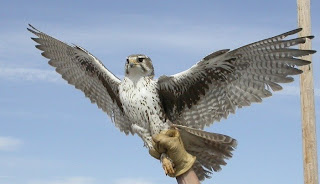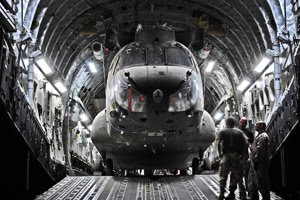
India's Air Force, the world's fourth largest, has over 600 combat aircraft and more than 500 transports and helicopters. The air force takes pride in its ability to fly low and fast, as well as to operate in the extremes of temperature and altitude ranging from the Thar Desert to the Siachen Glacier. The air force has enhanced the capability of its fighter force with the addition of the multi-role Sukhoi 30, and it hopes to replace much of its Mig-21 fleet with the indigenous Light Combat Aircraft currently under development.
As of mid-2000, the Indian Air Force had embarked on acquisition of systems for front line aircraft/helicopter for day/night operations, strengthening of the electronic warfare armour and acquisition of top of the line precision guided ammunitions, enhancement of air defence capabilities to ensure early detection and continuous surveillance of any enemy ingress and surface to air guided weapons to ensure lethality in IAF strike power.
The air force was established in 1932. In 1994, it had 110,000 personnel and 779 combat aircraft. The air force, which is headquartered in New Delhi, is headed by the chief of air staff, an air chief marshal. He is assisted by six principal staff officers: the vice chief of air staff, the deputy chief of air staff, the air officer in charge of administration, the air officer in charge of personnel, the air officer in charge of maintenance, and the inspector general of flight safety.
The air force is deployed into five operational commands: the Western Air Command, headquartered at New Delhi; the Southwestern Air Command, headquartered at Jodhpur, Rajasthan; the Eastern Air Command, headquartered at Shillong, Meghalaya; the Central Air Command, headquartered at Allahabad, Uttar Pradesh; and the Southern Air Command, headquartered at Thiruvananthapuram (Trivandrum), Kerala. Additionally, there are two functional commands: the Training Command at Bangalore, Karnataka, and the Maintenance Command at Nagpur, Maharashtra. Of the seven IAF commands, the Western Air Command (WAC) is the most coveted as it covers a large chunk of the Indo-Pak border.
Aside from the Training Command at Bangalore, the center for primary flight training is located at the Air Force Academy at Hyderabad, Andhra Pradesh, followed by operational training at various air force schools. Advanced training is also conducted at the Defence Services Staff College; specialized advanced flight training schools are located at Bidar, Karnataka, and Hakimpet, Andhra Pradesh (also the location for helicopter training). Technical schools are found at a number of other locations.
The Air Force is composed of (i) Squadrons and Flights of various kinds of aircrafts such as Fighter, Bomber, Transport, Communication, Reconnaissance etc., (ii) Establishments for the training of officers in flying, technical and ground duties and of airmen in technical and their trades, (iii) Maintenance Units for the storage, custody, supply maintenance, repair and overhaul of Air Force equipment, and (iv) Command administrative and miscellaneous units. In addition to providing essential air defence for the country, the A.F. undertakes the transport of personnel and stores as required by the exigencies of the service, dropping of supplies in areas otherwise inaccussible and aerial surveys. In times of Natural Calamities, the Air Force aids the Civil authorities, wherever necessary.
In 1991, the government approved the induction of women into nontechnical air force officer billets, such as administration, logistics, accounting, education, and meteorology. In 1992 opportunities for "pioneer women officers" were opened in the areas of transportation, helicopters, and navigation, and the first group of thirteen women cadets entered the Air Force Academy. During their flight training, they qualified on HPT-32 and Kiran aircraft to earn their air force commissions. After completing ten months' training, five of the seven successful course graduates received further training on various transport aircraft. By 1994, there were fifty-five women officers in the air force.
 Air Force headquarters
Air Force headquarters 






































